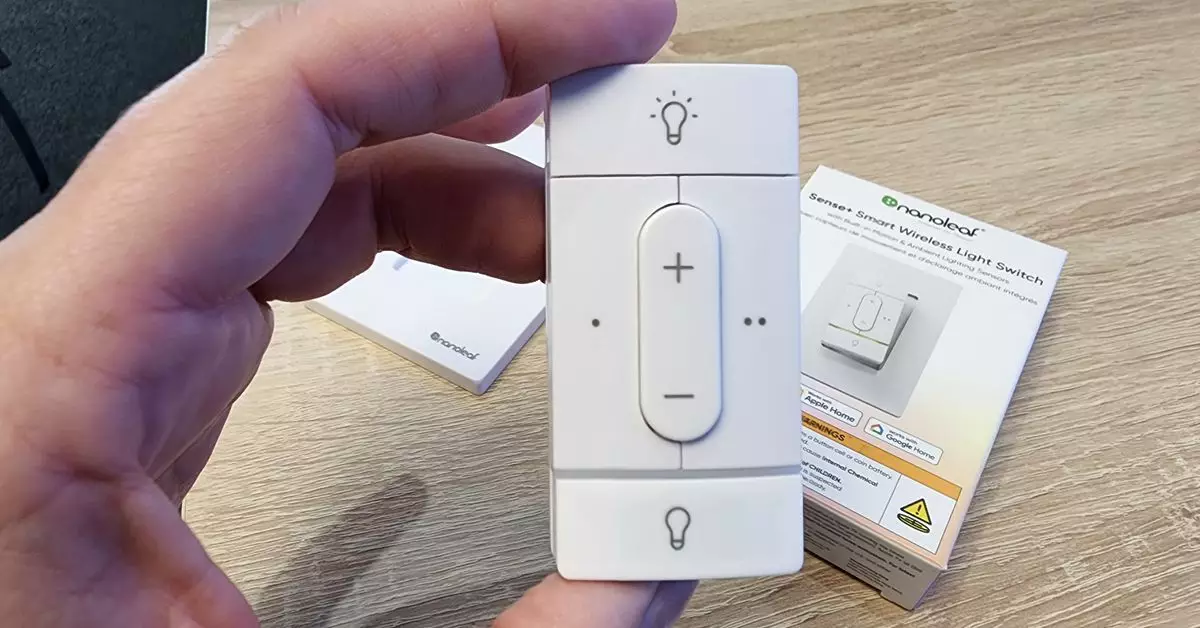Nanoleaf, a company known for its innovative smart lighting solutions, has recently unveiled its much-anticipated smart switch called Sense Plus. This battery-powered device aims to bring physical control to Nanoleaf’s smart lighting system, allowing users to effortlessly adjust lighting settings with a simple press of a button. However, the journey to developing this smart switch has been a long and challenging one for Nanoleaf, requiring the company to pivot from their initial adoption of Thread to create a new proprietary protocol known as Litewave.
After nearly a decade of development, Nanoleaf found itself in a position where it needed to find a more reliable wireless connectivity solution for their smart switch. This led to the creation of Litewave, a proprietary local protocol specifically designed for the Sense Plus smart wireless switch. According to Nanoleaf’s co-founder and CEO, Gimmy Chu, the challenge lay in finding a low-power networking solution like Thread while also needing a common communication protocol like Matter. Litewave was developed to ensure seamless communication between the smart switch and Nanoleaf lights, regardless of the wireless technology they use.
The Sense Plus smart switch offers a range of innovative features that set it apart from traditional lighting controls. In addition to standard lighting adjustments, the Sense Plus includes two configurable buttons that can be customized through Nanoleaf’s app or integrated with popular smart home platforms such as Apple Home and Samsung SmartThings. This level of customization enables users to create personalized scenes and automations, such as a “Movie Time” setting that adjusts multiple devices with a single button press.
While Nanoleaf initially embraced Thread as a wireless connectivity solution, they soon encountered challenges with its implementation alongside Matter. The complexity of Matter and its multiple platforms posed obstacles for Nanoleaf, leading them to develop Litewave as a more reliable alternative. Litewave provides a robust and instantaneous connection for the Sense Plus smart switch, allowing for seamless control over Nanoleaf lights without the need for additional devices like Thread border routers or Matter controllers.
In a bid to cater to a wider audience, Nanoleaf has also introduced its first Matter over Wi-Fi light bulb, the Essentials Matter Wi-Fi A19 Smart Bulb. This shift towards Wi-Fi connectivity aligns with Nanoleaf’s strategy to reach a mass market audience, particularly through retail partners like Walmart. By offering a range of lighting solutions that leverage different wireless technologies, Nanoleaf aims to make smart lighting more accessible and versatile for consumers.
Nanoleaf’s decision to explore alternative wireless technologies reflects a broader trend in the smart home industry, where companies are hedging their bets on protocols like Matter over Thread. While Thread continues to evolve with updates like Thread 1.4, manufacturers like Nanoleaf are actively seeking out solutions that offer greater reliability and compatibility with their smart devices. As the landscape of smart home technologies continues to evolve, it is crucial for companies like Nanoleaf to adapt and innovate to meet the changing needs of consumers.
Nanoleaf’s journey towards developing the Sense Plus smart switch and expanding its lighting ecosystem highlights the company’s commitment to pushing the boundaries of smart home technology. By leveraging proprietary protocols like Litewave and embracing new wireless connectivity solutions, Nanoleaf is paving the way for a more seamless and intuitive smart lighting experience for users around the world.

